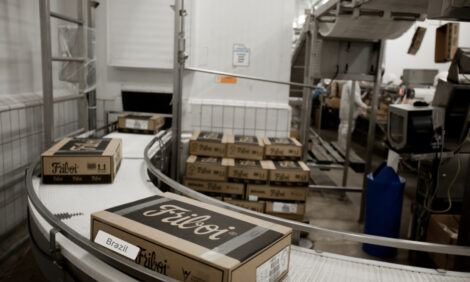



Cattle Population Drops
BOTSWANA - Botswanas beef industry is not progressing as the population of cattle is fluctuating between two and two and a half million while demand is increasing.Central Statistic Office (CSO) figures indicate the cattle population reached its highest number of over three million in 2002, but the number plummeted to just under two million in 2003.
The Acting Director in the Department of Animal Health and Production, Dr Phillemon Motsu, attributed this to challenges such as drought, transboundary diseases and HIV/AIDS.
He said unreliable and erratic rainfall pose a great challenge to the industry, adding that the situation is aggravated by the communal extensive management system that relies on open rangeland grazing.
He said supplementary feeding is limited because of the high cost of imported livestock feeds.
He said due to globalisation there is an increased risk of the regional spread of cattle diseases such as Foot-And-Mouth and Contagious Bovine Pleuropneumania (CBPP).
However, Dr Motsu said the country currently has enough cattle for the domestic and international markets. He added that as more cattle producers adopt commercial farming practices, the number of cattle will increase to meet the domestic and international demand.
The department continues to work with key industry stakeholders to implement mutually agreed proposals for the improvement of the sector, said Dr Motsu.
Botswana is renowned for its good quality beef which has enabled her to compete with countries such as America, Brazil, Argentina and Australia. However, the country has never been able to fulfill its quota for the European Union market.
A cattle farmer in Ngwaketse West, Mr Mothosera Simane, said something drastic must be done to increase the cattle population.
He said it is difficult to increase cattle herds on communal grazing lands because of the restrictions that communities impose.
He said many farmers, especially small-scale farmers, operate on unfenced communal grazing ranges. He added that they also water their cattle at syndicate owned boreholes which forces those with larger herds to reduce them.
Mr Simane said land boards should help to increase the national herd by allocating more ranches to full-time farmers. He said wildlife management areas should be changed to ranch land as there are game reserves and national parks throughout the country.
He said the high levies small farmers pay as rental for paddocks in private ranches has impeded their growth.
The CSO records also indicated that in 1993 there were only about 1 821 million cattle in the country which was the lowest number since 1979.
The central veterinary region comprising Serowe, Mahalapye, Selebi-Phikwe and Palapye has the highest number of cattle at approximately 600 000 animals while the northwest region comprising of Maun, Shakawe, and Kasane has the lowest number at approximately 220 000 cattle. BOPA
TheCattleSite News Desk


